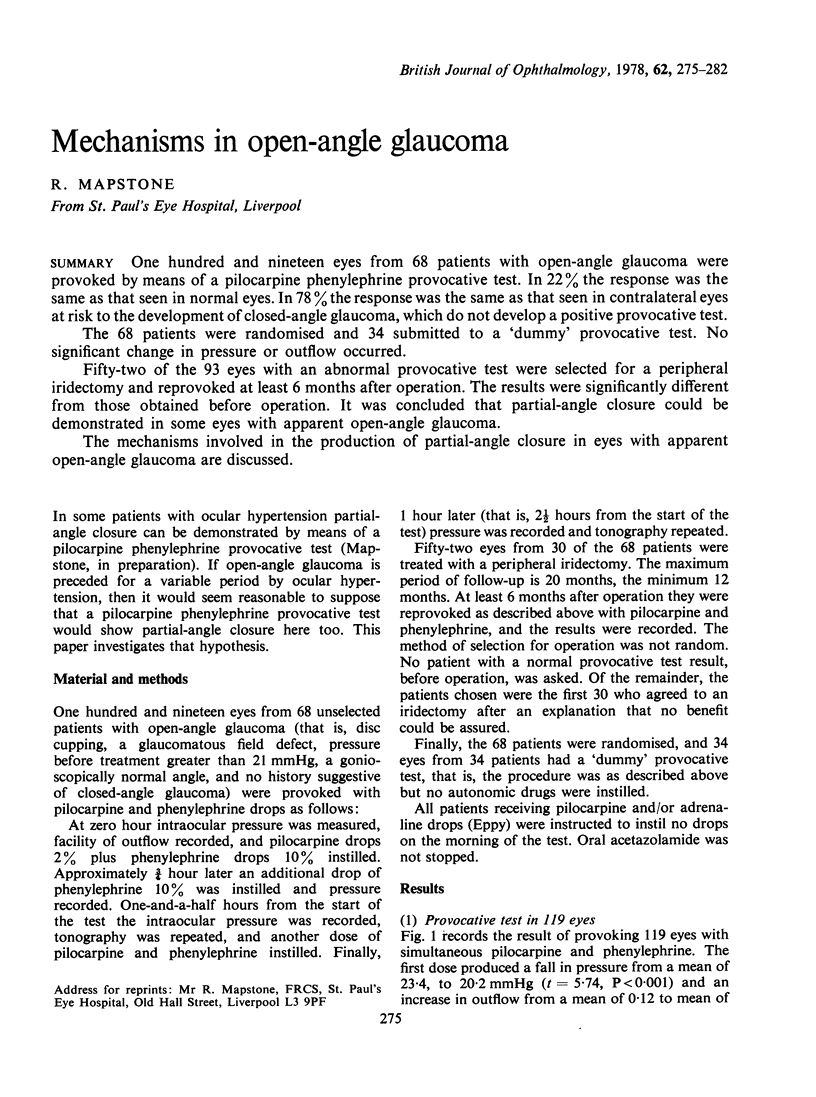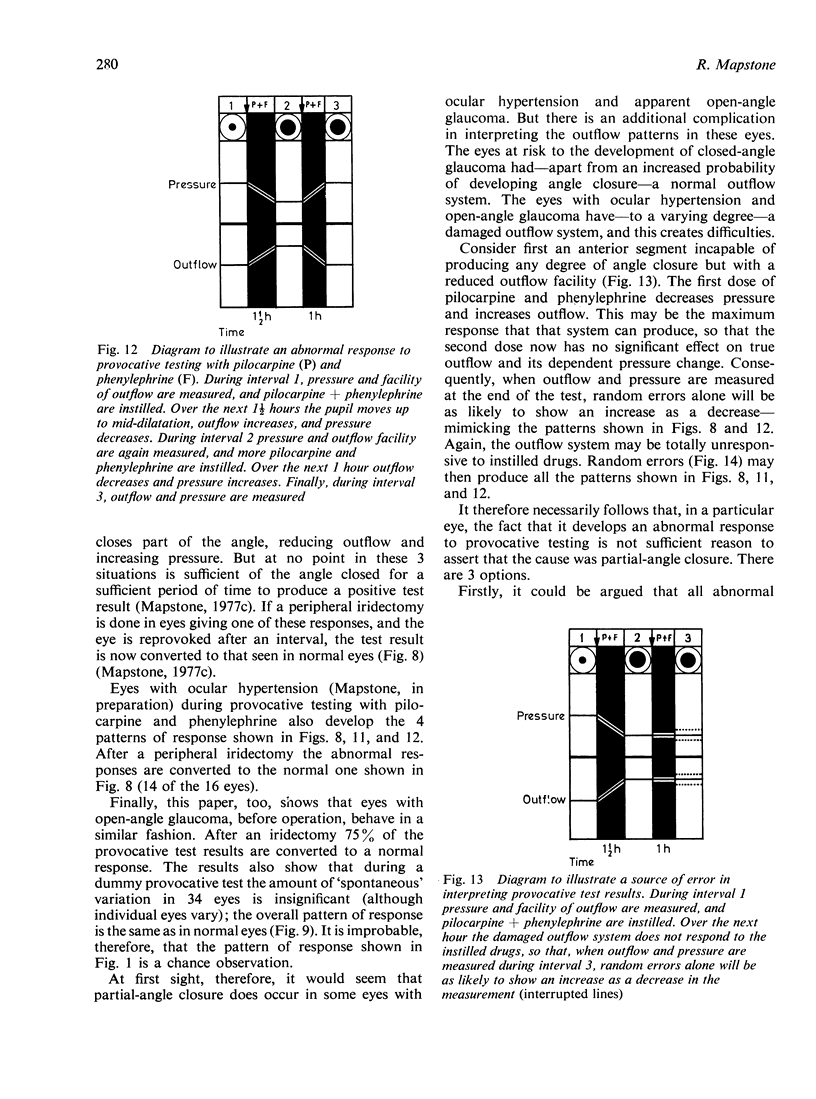Abstract
One hundred and nineteen eyes from 68 patients with open-angle glaucoma were provoked by means of a pilocarpine phenylephrine provocative test. In 22% the response was the same as that seen in normal eyes. In 78% the response was the same as that seen in contralateral eyes at risk to the development of closed-angle glaucoma, which do not develop a positive provocative test. The 68 patients were randomised and 34 submitted to a "dummy" provocative test. No significant change in pressure or outflow occurred. Fifty-two of the 93 eyes with an abnormal provocative test were selected for a peripheral iridectomy and reprovoked at least 6 months after operation. The results were significantly different from those obtained before operation. It was concluded that partial-angle closure could be demonstrated in some eyes with apparent open-angle glaucoma. The mechanisms involved in the production of partial-angle closure in eyes with apparent open-angle glaucoma are discussed.
Full text
PDF







Selected References
These references are in PubMed. This may not be the complete list of references from this article.
- Mapstone R. Normal response to pilocarpine and phenylephrine. Br J Ophthalmol. 1977 Aug;61(8):510–511. doi: 10.1136/bjo.61.8.510. [DOI] [PMC free article] [PubMed] [Google Scholar]
- Mapstone R. Outflow changes in positive provocative tests. Br J Ophthalmol. 1977 Oct;61(10):634–636. doi: 10.1136/bjo.61.10.634. [DOI] [PMC free article] [PubMed] [Google Scholar]
- Mapstone R. Partial angle closure. Br J Ophthalmol. 1977 Aug;61(8):525–530. doi: 10.1136/bjo.61.8.525. [DOI] [PMC free article] [PubMed] [Google Scholar]


